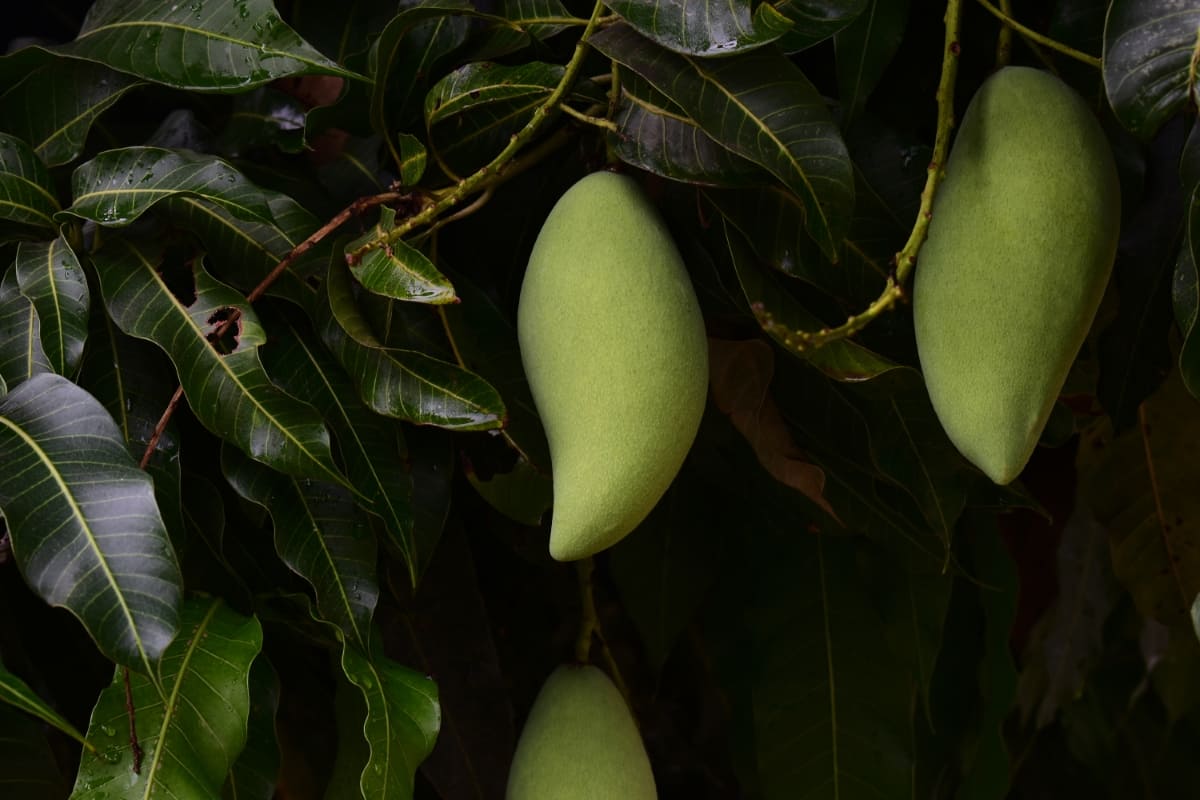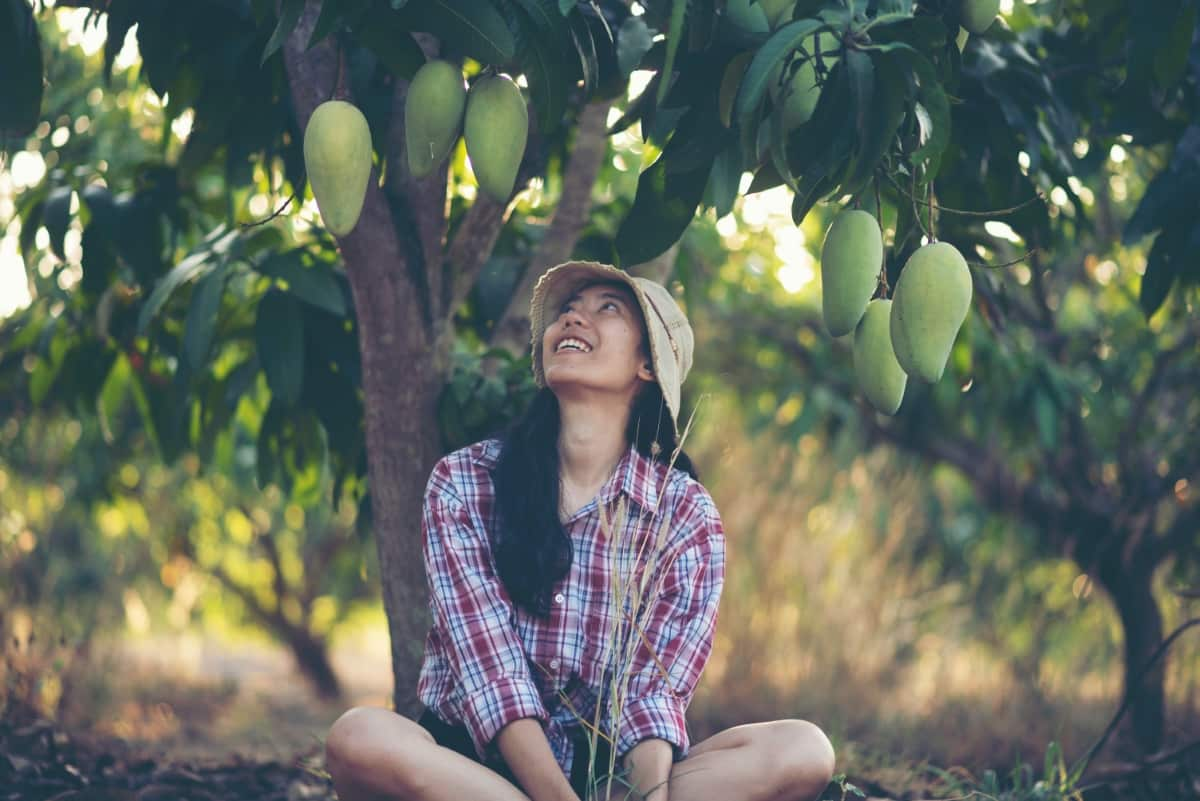Growing Katimon Mangoes can be a rewarding experience for any Mango enthusiast. With its unique flavor and abundant harvests, this Thai All Time Katimon variety is truly a delight to have in your backyard. The origins of the Katimon Mango can be traced back to traditional Thai cultivation practices, where farmers have been cultivating various varieties of Mangos for centuries.

By following the proper planting techniques, providing necessary care, and being vigilant against pests and diseases, you can ensure healthy growth and maximize your harvest. When it comes to the taste of Katimon Mango, get ready for a flavor explosion in your mouth. This Thai variety is renowned for its exceptional sweetness and juiciness.
The size of the Katimon Mango is not just limited to its weight, though. The fruit itself can measure up to 6-8 inches in length and have a diameter of about 4-5 inches. Its oblong shape and vibrant skin make it hard to miss when you see it hanging from the branches of the Mango tree.
How to Grow Katimon Mango
Selecting the Right Katimon Mango Seedlings
The quality of the Katimon Mango seedling will determine the future productivity and health of your trees. Choose healthy seedlings that have strong stems and well-developed root systems. Look for plants with vibrant green leaves, as this indicates they are receiving enough nutrients. Consider the age of the seedling.
It’s advisable to opt for young saplings rather than older ones, as they tend to adapt better to new environments and establish quicker. Furthermore, examine the graft union carefully. This is where two different varieties are joined together. Ensure there are no signs of infection or rot at this junction point.
Choosing the Planting Site
- Sunlight: Mango trees thrive in full sunlight, so choose a spot where they get at least six hours of direct sunlight daily. Avoid areas with excessive shade or buildings that may obstruct the sun.
- Soil quality: The soil should be well-draining and rich in organic matter. Sandy loam or loamy soil is best for Mango cultivation as it allows proper root development and prevents waterlogging.
- Wind protection: Strong winds can damage young Mango trees and affect fruit set, so select a site that offers some natural windbreaks like fences or existing vegetation.
- Water availability: Mango trees require regular watering, especially during dry spells or while establishing new seedlings.
- Space requirements: Katimon Mango trees have a spreading habit, so allow enough space between each tree to ensure proper airflow and avoid overcrowding.
Preparing the Soil
When it comes to growing Katimon Mango trees, one of the most essential steps is preparing the soil. Clear any weeds or vegetation from the area where you plan to plant your Katimon Mango seedlings. Loosen up the soil by using a garden fork. Make sure to break up any clumps of compacted soil as well. Adding organic matter can greatly improve the fertility and structure of the soil. Mix these amendments thoroughly with the existing soil to provide essential nutrients for healthy growth.
It’s also important to test your soil pH levels before planting. Katimon Mango trees thrive best in slightly acidic soils with pH ranges from 5.5 to 7. If necessary, adjust the pH level by adding lime or sulfur accordingly. Ensure that there is proper drainage in your planting site. Excess water should be able to drain away easily, as soggy conditions can lead to root rot and other diseases.
Planting the Katimon Seedlings
Planting Katimon Mango seedlings is an important step in growing these delicious Mango trees. The Katimon Mango season begins in late spring or early summer and extends through the warmer months. To ensure their successful establishment, there are a few key factors to consider.
In case you missed it: Cost of Drip Irrigation Per Acre for Mango Plantation: Exploring Installation Costs Along with Subsidy

First and foremost, choose a spot with well-drained soil and plenty of sunlight. The Katimon Mangoes thrive in warm climates, so finding a sunny location is crucial for optimal growth. Remove weeds that may hinder the seedlings’ growth. Dig a hole, gently place the plant into the hole, and backfill the hole with soil. Water your newly planted Katimon seedling thoroughly to settle the soil.
Watering and Irrigation Requirement
Watering and irrigation are crucial aspects of growing Katimon Mango trees. Adequate water supply is essential for the healthy growth and development of the plants. During the initial stages, it is important to ensure that young seedlings receive sufficient water. This helps establish their root system and promote overall plant health. As they mature, the watering frequency can be gradually reduced.
The best way to determine when to water your Katimon Mango tree is by checking the moisture level of the soil. Stick your finger about a few inches – if it feels dry at this depth, then it’s time to water. It’s better to provide deep watering rather than frequent shallow watering sessions, as this encourages deeper root growth.
Best Fertilzier for Katimon Mango Trees
When growing healthy and fruitful Katimon Mango trees, choosing the right fertilizer is crucial. One popular choice for fertilizing Katimon Mango trees is organic compost. Compost provides a slow release of nutrients, improving soil structure and fertility over time. Another option is using a balanced granular fertilizer specifically formulated for fruiting trees. These fertilizers typically have equal amounts of nitrogen (N), phosphorus (P), and potassium (K).
They provide the necessary nutrients to support healthy leaf growth, strong root development, and abundant flower formation. In addition to these primary macronutrients, Katimon Mango trees also benefit from secondary micronutrients such as magnesium, iron, zinc, manganese, and copper. These can be provided through foliar sprays or incorporated into the soil.
Training and Pruning of Katimon Mango Trees
Training and pruning are crucial for the healthy growth and development of Katimon Mango trees. The height of the Katimon Mango tree is one of its distinguishing features. By properly shaping and maintaining these trees, you can enhance their productivity and overall appearance. It is important to train young Katimon Mango trees by establishing a central leader or main trunk. This involves selecting a strong, upright branch as the central stem and removing any competing branches that may hinder its growth.
By doing so, you ensure that the tree grows in an organized manner. As the tree matures, regular pruning becomes necessary to remove dead or diseased branches. Pruning also helps in promoting air circulation within the canopy, reducing the damage of fungal infections. When pruning Katimon Mango trees, make sure to use sharp tools such as clean shears or loppers to prevent tearing or damaging the branches. Remove any weak or crossing limbs that may cause crowding within the canopy.
In case you missed it: Mango Tree Fertilization: Schedule, Application Process

Additionally, thinning out excessive foliage allows sunlight penetration into the inner areas of the tree, facilitating fruit production throughout its entire structure. This will result in evenly ripened fruits with better quality. Remember to always monitor your Katimon Mango trees for any signs of stress or potential issues after training and pruning. Regular maintenance ensures healthier plants that are more resistant to pests and diseases.
Pest and Disease Control
Pest and disease control is a key aspect of growing Katimon Mango trees. These beautiful trees are not immune to the threats posed by various pests and diseases, which can significantly impact their growth and yield. One common pest that affects Katimon Mango trees is the Mango fruit fly. If any signs of infestation are detected, prompt action should be taken to prevent further spread.
Another potential threat is fungal diseases such as anthracnose and powdery mildew. These diseases can cause leaf spots, rotting fruits, and overall decline in tree health. Regular pruning practices, along with proper air circulation around the tree canopy, can help minimize these issues. Using organic or biopesticides is recommended for pest management on Katimon Mango trees. These products are effective yet environmentally friendly alternatives to synthetic chemical pesticides.
Harvesting After 3 to 4 Years
The ideal time to harvest Katimon Mangoes is when they have reached their full maturity, which typically occurs around 3 to 4 years after planting. You can determine this by observing the color and texture of the skin – it should have turned a vibrant shade of yellow or orange and feel slightly soft to the touch.
In case you missed it: How to Prune a Mango Tree and When to Prune Mango Trees

When harvesting, make sure to use sharp pruning shears to avoid damaging the tree or fruit. Gently twist each Mango until it separates from the stem without any resistance. Remember not to pull or tug on them forcefully, as this can cause bruising.
Conclusion
Growing Katimon Mango requires careful consideration of climate conditions while ensuring optimal care during cultivation stages. By following the right practices—from planting to harvesting—you can enjoy an abundant supply of deliciously sweet Katimon Mango straight from your backyard.
- Feed Your Flock for Less: Top 10 Tips to Save on Chicken Feed
- Ultimate Guide to Ossabaw Island Hog: Breeding, Raising, Diet, and Care
- Hatching Answers: The Top 10 Reasons Your Chickens Aren’t Laying Eggs
- Eggs and Economics: Breaking Down the Cost of Raising Backyard Chickens
- Defend Your Greens: Proven Methods to Keep Iguanas Out of Your Garden
- Ultimate Guide to Cinnamon Queen Chicken: A Comprehensive Guide for Beginners
- Ultimate Guide to California Tan Chicken: Breeding, Raising, Diet, Egg-Production and Care
- Ultimate Guide to Marsh Daisy Chicken: Breeding, Raising, Diet, and Care
- 10 Types of Chicken Farming Businesses You Can Start for Profits